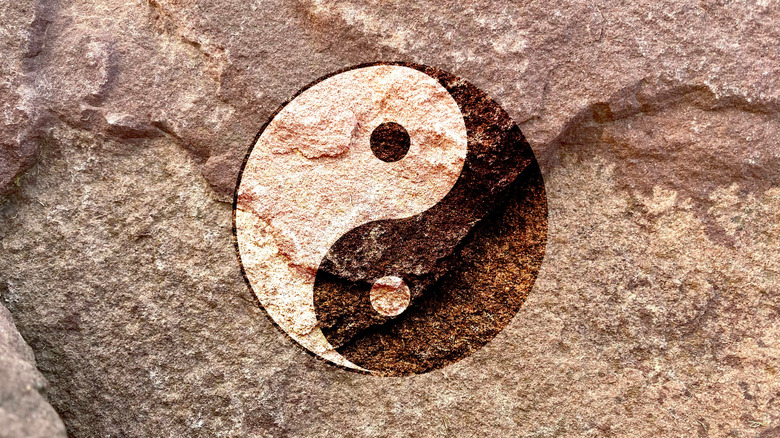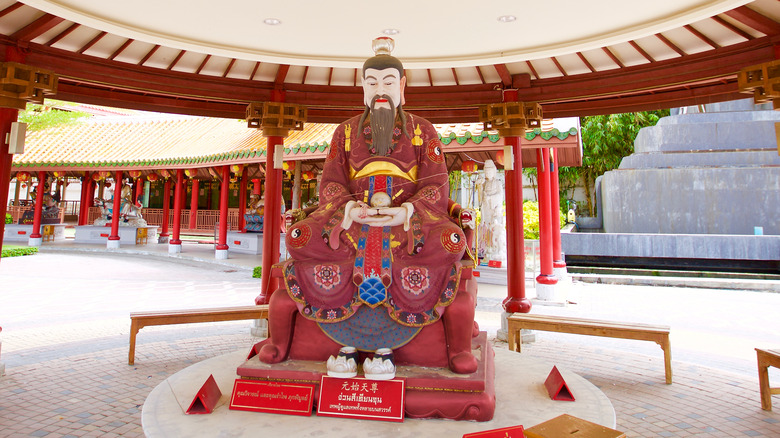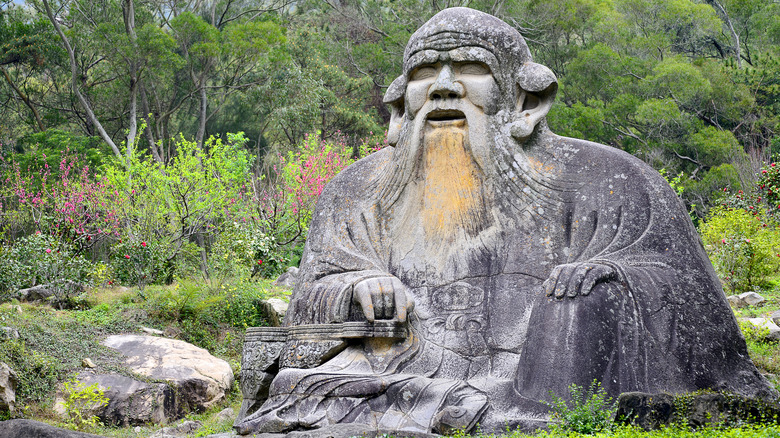These Are The Highest Deities In The Taoist Belief
Taoism (sometimes spelled Daoism) is belief system that originated in indigenous communities of present-day China. It incorporates religious elements, but also elements that are more philosophical than religious. The first texts and practices that followers of Taoism compiled are unclear. Scholars point to texts from the second, third, and fourth centuries B.C. Widely accepted early texts for followers of Taoism are the Daodejing and the Zhuangzi. The former teaches that "dao" means "the way." Dao is the way that things come together in our world and how they continuously change. The latter explains the necessary practices for one to reach unity with the dao. Doing so requires a rejection of common societal values.
There are multiple deities within Taoism. These deities are part of purification and meditation rituals performed by Taoists that aim to bring unity to the cosmos and to humanity (per BBC). Such deities include the Four Heavenly Emperors, and the Five Emperors of the Five Directions. However, there are three deities held in the highest regard.
Taoists believe in the Three Pure Ones
San-ch'ing means "Three Pure Ones" in Chinese. Taoists associate these three deities with the three highest realms of heaven (per Britannica). First is Yu-ch'ing, which means Jade Pure. Yüan-shih t'ien-tsun coincides with Jade Pure is considered the first principle. Yüan-shih t'ien-tsun has no beginning and no end. He is omnipresent and never changes. The second of the "Pure Ones" is Shang-ch'ing, which means Upper Pure and coincides with Ling-pao T'ien-tsun. Ling-pao T'ien-tsun is the Spiritual Treasure Honored by Heaven and the Heroes. The third is T'ai-ch'ing, meaning Great Pure. Taoists connect the yin-yang symbol and the Big Dipper to T'ai-ch'ing (per Chebucto).
According to Learn Religions, Taoists credit Jade Pure as the creator of the first writing system, and therefore, responsible for Taoist texts. Upper Pure (or Supreme Pure) communicates messages from Jade Pure's scriptures to the rest of the deities and to humans. Great Pure has taken many forms, but one of these was that of Lao Zi (or Laozi). Lao zi is believed to be the first Taoist (per Britannica).
Lao zi is thought to be the main author of the Daodejing
Lao zi likely had a hand in writing the Daodejing, though this text has multiple authors. Citizens of the Tang Dynasty in present-day China worshipped Lao zi as an ancestor. Legend has it that Lao zi met Confucius, who compared Lao zi to a dragon capable of rising to the sky (per Britannica).
Taoism is polytheistic. Beneath the Three Pure Ones is the Jade Emperor. Taoism also venerates the Queen Mother of the West, the Three Divine Officials, the Four Heavenly Emperors, and other deities or immortals (per China.org).
National Geographic states that most Taoists are still in present-day China and Taiwan. Aside from their deities, Taoists strive for harmony in the universe. As previously mentioned, yin-yang is part of Taoism. Yin-yang shows that everything in the universe has an opposing force. Therefore, everything is connected. The deities are part of the universe just as all living creatures are as well.


